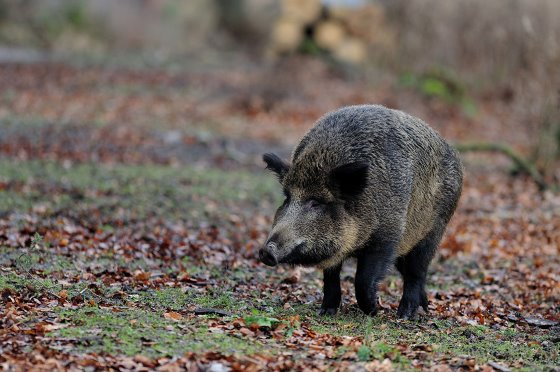New African swine fever variants kill millions of pigs in China, devastating herd rebuild plan

A second wave of African swine fever (ASF) is estimated to have killed as many as eight million pigs in China since the start of the year, derailing the country’s plans to rebuild its national herd.
The first reported outbreak of the disease was in August 2018 and within a year it had spread to multiple countries and killed an estimated 25 per cent quarter of the world’s pig population.
Independent meat analyst Simon Quilty said the ASF variants that swept through China in the past two months had significant implications for the global protein market.
“China has just come out in recent days claiming that by the middle of this year they will be back to 100 per cent recovery [from African swine fever], which is simply impossible,” he told ABC Rural.
“Because in the last six to eight weeks, this second wave – due to some new strains of the virus – has killed somewhere between seven and eight million sows.”
Doubts over data
Mr Quilty said there were a number of indicators that suggested China was “nowhere near the herd rebuild” its ministry of agriculture claimed.
“Piglet prices in China are today four times the value of what they were pre-African swine fever in 2017-18,” he said.
Hog prices are two to three times higher and sow prices are more than double.
“So if the herd was back to the level they claim, we would not be seeing these significant numbers [prices] — they’d be back at pre-ASF levels … and then add to that this second wave of swine fever.”
Mr Quilty is not alone is his scepticism about China’s claims.
In his article Why I Don’t Trust Chinese Data on the Pig Herd Rebuild, analyst Andrew Whitelaw said elevated pork prices were not the only issue — China’s imports of meat were also on the rise.
“When imports start declining rapidly, then that will point towards an effective rebuild,” Mr Whitelaw said.
Mr Whitelaw said one of the biggest drivers of meat pricing in the past couple of years was the impact of African swine fever.
He estimated that pig deaths in China last year created a protein gap of approximately 25 million tonnes.
Impacts on meat, corn prices
Mr Quilty said there were three known strains of African swine fever, two of which were understood to have emerged from illegal vaccines, and that there were no signs of countries being able slow the spread.
He said China’s push towards building super complexes – or so-called pig hotels – was also understood to have been impacted.
The ramifications for global meat prices would be significant, Mr Quilty said.
“There’s no doubt that meat prices will go higher, be it pork, beef or chicken,” he said.
“This second wave will put China’s [pig herd] rebuild many years behind and so ongoing high prices, I think, are here to stay for at least two to three years.”
Mr Quilty said the situation would have broader impacts.
“Also, I think we’ve seen this enormous jump in global corn and cereal prices — but with this recent collapse in the herd, the net effect is there will be an easing on demand,” he said.
“You just can’t take seven to eight million sows out of the system and not have an impact on cereal demand.”
Read also
Wheat in Southern Brazil Impacted by Dry Weather and Frosts
Oilseed Industry. Leaders and Strategies in the Times of a Great Change
Black Sea & Danube Region: Oilseed and Vegoil Markets Within Ongoing Transfor...
Serbia. The drought will cause extremely high losses for farmers this year
2023/24 Safrinha Corn in Brazil 91% Harvested
Write to us
Our manager will contact you soon



